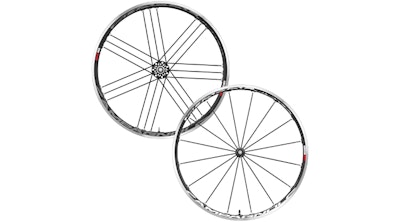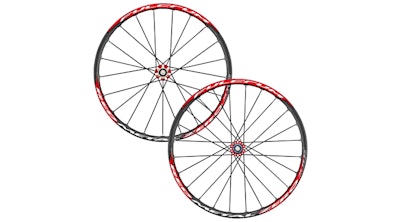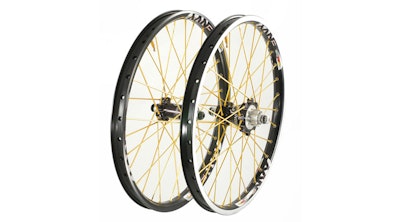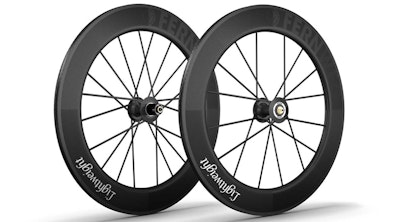Go out riding and inevitably at some point the conversation has to turn to wheels. It’s just the riding law of probability, isn’t it? So what in the world of wheels do we need to know? We get the ball rolling with some bare essentials. And once you’re armed with all the info you need, find the best wheels and top deals on www.BikeExchange.co.nz
How do you make your bike go faster?
Upgrade your wheels! Wheels are a rotating mass – if you make these stronger and lighter then of course you’re going to see better results than if you were to upgrade a static part of your bike.
What wheels do you need?
The type of bike wheels you need depends entirely on the type of riding you plan to do. Let’s look at some of the more common types of riding: - Racing or triathlon: you’ll want aerodynamic wheels that can slice through any drag and help you go fast - Climbing: you’ll want strong, light wheels with low profile rims (see below) – you don’t need to worry about aerodynamics - Mountain biking: you’ll want light wheels that don’t flex much as they move along difficult or technical terrain - BMX riding: you’ll want BMX specific wheels (but if you’re freestyling or dirt jumping then you’ll need wheels specific to the job – more explained below)
What are the key parts to a bike wheel?
There are four main components to a bike wheel, irrespective of the type:
- Rim – the outer edge of the bike wheel, which essentially holds the tyre
- Hub – the bearing device and axle around which the wheel itself revolves. Normally this will have two metal flanges to which spokes can attach
- Spokes – the rods that protrude from the hub and connect it with the rim
- Nipples – connects and holds each spoke to the bike’s rim
What do you need to know about bike wheel rims?
If you’re buying a bike frame only and you then need to collect the additional parts and accessories, bear in mind that when selecting your bike rim, you need to factor in the tyres you prefer using. In short – a tyre’s width could affect its rim compatibility.
The deeper a rim the more aerodynamic it becomes however, this also means it has more mass and therefore weighs more. So in short – if you’re racing at fast speeds on long flats, then logic says you should opt for a deeper rim, whereas if you’re climbing hills then you’d opt for a low profile lighter rim.
What do you need to know about bike wheel hubs?
Firstly – that there are options.
Normally you’ll have a choice between tall flanges or low flanges, and sealed bearings or loose ball bearings. You’ll also have a choice of materials used to make the wheel hub.
Low flange hubs have a small diametre lip whereas high flange hubs have a larger diametre lip. There is conjecture as to which is superior (e.g. which one makes for a stiffer wheel) although low flange hubs are more common these days.
Loose ball bearing hubs that are correctly lubricated have been known to last tens of thousands of cycling kilometres, and tend to endure heavier loads. If not correctly lubricated and adjusted, then this same ball bearing system can be compromised fairly quickly.
A sealed cartridge bearing tends to weigh less than the loose ball bearing counterpart, but also tends to be more expensive to buy as well as maintain.
What do you need to know about bike wheel spokes?
Imagine the wheel turning, and the change in tension experienced by every spoke as it rotates. Depending on where it is in the rotation, it is either load bearing or not. There are some who believe removing spokes will make a bike wheel lighter, more aerodynamic and therefore more efficient to use. The other train of thinking however, suggests this is impractical and unstable (particularly when tracking around corners) and that it would be better to instead simply use lighter weighing spokes.
What do you need to know about bike wheel nipples?
When it comes to bike wheel nipples, you have two choices – alloy or brass. The latter is easier to use if you’re building a wheel from scratching and trueing it, but both are equal in strength. Those who ride for pleasure versus racing against time will probably opt for brass nipples.
What types of bike wheels are there?
This question is best answered in parts. In short, there are basically three main styles of bike wheel but then within each of these categories you will have a range of options. The three styles are:
Let’s look at road bike wheels
In comparison to the other two types of wheels, road bikes are narrower. This enables them to reduce rolling resistance. As a general rule of thumb, the lighter your road bike wheel the more expensive it is. Road bike wheels can come with disk brakes (when the bike is slowed by friction created when brake pads push against a brake disk).

What’s a disk wheel?
A disk wheel has no spokes or areas through which air can pass. Carbon is moulded into a disk to create an incredibly aerodynamic feature. For this reason disk wheels are commonly used in races, but less so when conditions are windy. Disk wheels tend to only be used at the rear, so that the front wheel’s steering is not compromised when windy.
Let’s look at mountain bike wheels
MTB wheels are stronger, more resilient and traditionally thicker than road bike wheels. MTB wheels feature a disc break (an integrated bracket that attaches the disc rotor to one side of the hub).
26” wheels are most typically found on mountain bikes, and this indicates the width of the rim.
29ers are the relative new kids on the block in the world of wheels. They might not have been the most popular newbie in town when they first arrived, but their popularity is gaining momentum. Smaller wheels are largely more difficult to ride on challenging terrain, so the idea behind 29ers was to create a MTB wheel that was more comfortable for those technical or difficult rides. Moreover, 29ers tend to climb better due to their improved traction (they have more contact with the ground than smaller wheels), they make it easier to stay balanced on steeper climbs and they’re more stable descending.

You guessed it – this wheel is a compromise! So depending on where you sit, this either has the best of both worlds or it’s always lacking the features of a 26” or 29er.
Let’s look at BMX wheels
BMX wheels need increased strength so they can handle all the jumping and stunt work that is part and parcel of BMX riding.
For BMX racing you want a light wheel that can help you burst out of the starting gates fast. These same wheels however, aren’t going to be much chop if you’re freestyling or dirt jumping, in which case you’d need sturdier wheels that can endure what you put them through.

Aluminium wheels versus carbon wheels
The key differentiators here are robustness and weight. Although carbon wheels are lighter than aluminium wheels, they are not as robust. You can find wheels that are a carbon/aluminium hybrid (thus it reduces the weight of a normal aluminium wheel but makes it more robust than a carbon wheel).
Remember! If for example you run aluminium wheels for everyday riding, but you change them over to carbon when you race, it isn’t as simple as just replacing one wheel with the other. Carbon wheels should use their own specific wheel break block, as a normal break block can damage the carbon material. Moreover, through their natural course of use aluminium wheels over time leave aluminium flakes in the break blocks; these same flakes that get embedded into the block can prove very damaging to carbon wheels. So make sure you buy the right break blocks to go with your wheels!

Types of Tyres – Clincher / Tubeless / Tubular
A classic clincher has a clincher rim – which attaches to a tyre and runs an inner tube.
Tubeless – runs without an inner tube and relies on a fluid to seal the gap between the rim and the tyre.
Tubular – these are essentially a complete tyre that is glued onto a concave rim. These are lighter than clincher wheels, but they are quite finicky to set up (you need to glue them on) and if you suffer a puncture then you have to rip the tyre off and start a whole new one!
What is a wheel set?
It’s simply another way to say a pair of wheels!





